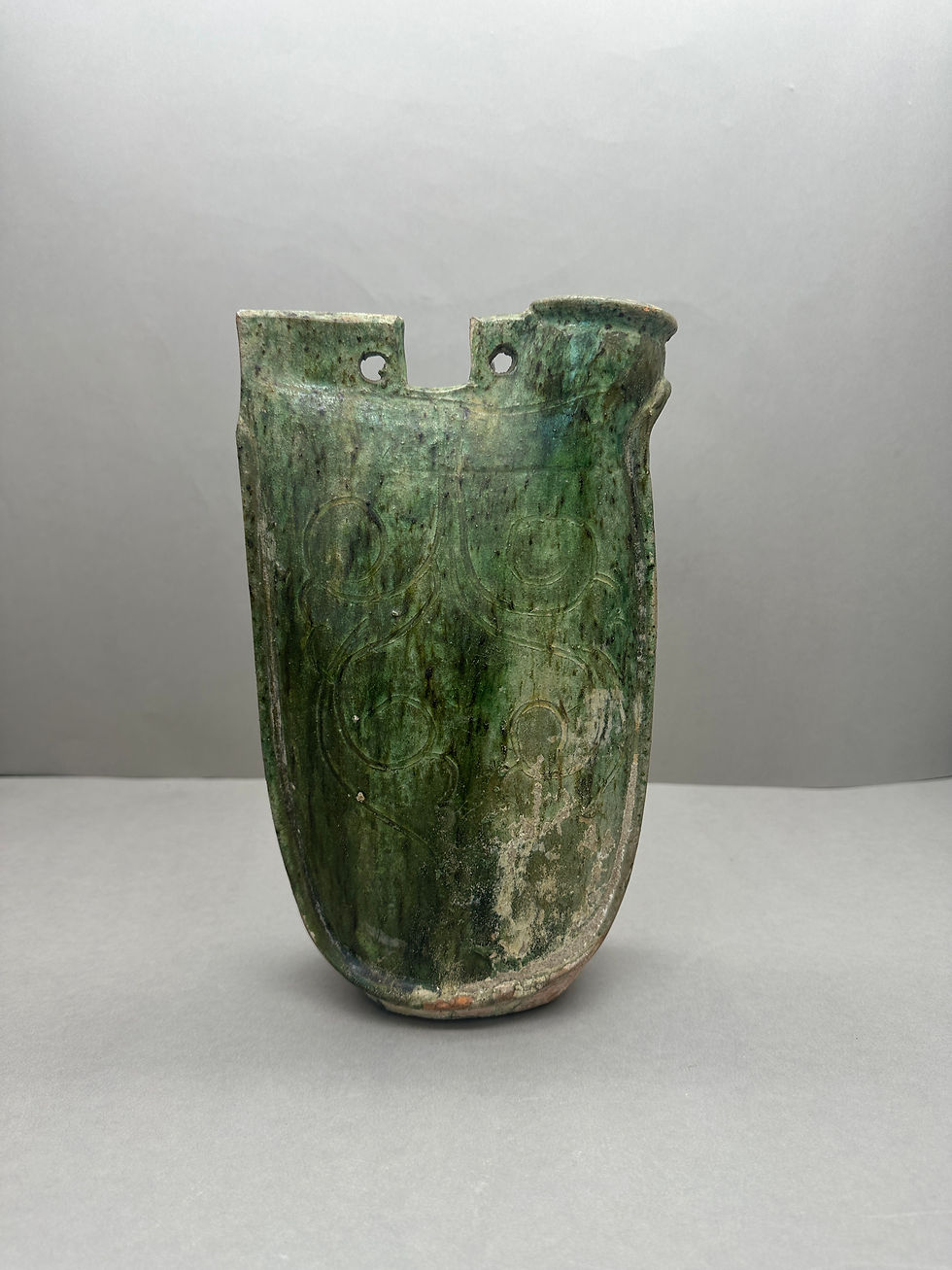宋代筆記 vol.30 白釉鳳首注子 Eumorfopoulos舊藏、大英博物館藏,或為潮州窯 - The Phoenix Ewer of Possibly Chaozhou Kiln, British Museum.
- SACA

- Feb 29, 2024
- 3 min read

SACA學會 宋代筆記 vol.30 白釉鳳首注子 Eumorfopoulos舊藏、大英博物館藏,或為潮州窯 - The Phoenix Ewer of Possibly Chaozhou Kiln, British Museum.
白瓷注子,裝飾有鳳頭和花葉圖案。釉面呈綠色,該酒樽曾一度帶有壺嘴,但似乎從未有過壺把。紋飾雕刻清晰,略帶浮雕造型,技藝精湛。這件作品被普遍認為是鳳首器型的最佳範例,但其出處卻存在爭議。遼國境內也出土過類似的花瓶,而廣東省和東南亞地區出土的花瓶則更為扁平。在廣州西村窯址發現了與大英博物館這件作品相似的器物殘片。根據日本早期的圖錄顯示,也有日本的學者認為這件作品來自潮州窯。

彼得-林 2021 年
彼得-林(Peter Lam)在 2021 年東方陶瓷學會(OCtober)的希爾斯金獎講座將發表在即將出版的《東方陶瓷學會論文集》(Transactions of the Oriental Ceramic Society)上。彼得重新審視了尤莫夫普洛斯的鳳首釉陶,並為這件精美的作品確定了新的年代和新的出處。
邁克爾遜 2006 年:
這件陶器被廣泛認為是已知鳳頭器皿中最精美的一件。由於其頭部的造型極其精美,學者們稱其為不朽、壯麗和有史以來最精美的中國陶瓷器之一。如此精巧的頭部目前尚無其他現存的例子。

由於北方的遼國境內和南方的廣東省西村窯址都曾燒制過此類鳳首注子,因此它究竟是在北方還是南方的窯場燒制的,目前尚無定論。儘管這樣頂尖的質量,學者們都很希望認為是定窯的製品,但事實卻沒那麼簡單,無論大家多麼希望它的產地在北方,目前尚未在中國北方發掘出類似的器物。
這件作品的意義在於提示收藏家和學者,對於質量於窯口的理所當然的搭配,是建立在空想和經驗主義的慣性邏輯中,是不可取的。宋代的窯口多姿多彩,每一個窯口都曾在不同時期製作過當時國內流行且並非本窯口典型的產品。過於執著於窯口之爭,已然變成一種對話語權的迷戀和本末倒置的權力之爭。
White porcelain ewer, decorated with a phoenix-head and a design of flowers and leaves. Covered in a green-tinged glaze, at one time this ewer had a spout, but does not seem to have ever had a handle. The crisp carving of the ornament, with its slightly modelled relief, is extraordinarily executed. This piece is widely regarded as the finest example of the phoenix-headed vessel type, but the provenance is debated. Similar vases are known from Liao territory, while a more squat form is known from Guangdong province and Southeast Asia. Sherds of a ware similar to the BM ewer have been found at the Xicun kiln site, Guangzhou.
Peter Lam 2021:
Peter Lam's Hills Gold Medal Lecture to the OCS of OCtober 2021 will be published in the forthcoming Transactions of the Oriental Ceramic Society. Peter has revisited the Eumorfopoulos phoenix headed ewer and attributed new dating and new provenance to this beautiful piece.
Michaelson 2006:
This ewer is widely regarded as the finest known example of the phoenix-head vessel type. Because of the extremely fine modelling of its head, this ewer has been described by scholars as monumental, magnificent and one of the finest Chinese ceramics ever produced. There are no other surviving examples of a head so intricate.
It is not established whether it was made in a northern or southern kiln, as such phoenix-headed ewers were made in Liao territory in the north as well as at the Xicun kiln site in Guangdong province in the south. Its similarity to a more vase-like form may point to a northern origin, but no closely comparable examples have yet been excavated




















Comments